July 11, 2012
Media Contact:
Geoff Brown
(240) 228-5618
Geoffrey.Brown@jhuapl.edu
As Aug. 23 Launch Draws Closer, RBSP Achieves Milestones and Announces Events
Video of RBSP spacecraft A's spin test up to 55 revolutions per minute, which took place on June 27, 2012. Spin tests help the team verify the mass characteristics of the spacecraft, and determine that it is balanced. During normal operations, RBSP will spin at approximately 5 RPM. Credit: JHU/APL
NASA’s Radiation Belt Storm Probes (RBSP) mission continues to make steady progress toward its scheduled launch date of Thursday, Aug. 23, 2012. The launch which will mark the culmination of years of work by staff at the Johns Hopkins University Applied Physics Laboratory (APL) and at partner institutions — and will herald the beginning of years of scientific research for many more RBSP team members, both at APL and on the Science Instrument Teams.
After six years of mission design and then construction at APL, the twin spacecraft spent more than six months undergoing integration and testing in Building 23, including the first-ever acoustic spacecraft testing conducted at the Lab. RBSP was shipped to Florida on May 1 aboard a USAF C-17 cargo jet, and after arriving safely at Kennedy Space Center (KSC) was transported to nearby Astrotech Space Operations for approximately three months of launch processing and final integration and testing.
The end of May marked the final installation and integration of RBSP’s instruments—each spacecraft carries an identical set of five instrument suites designed to give scientists an unprecedented view of the behavior and mechanisms of the radiation belts. (Learn about RBSP’s instruments here.)
June was a busy month for RBSP as well: The twin satellites underwent swing testing to characterize their individual magnetic signatures, had their flight blankets attached, went through a launch rehearsal, conducted mission simulation 4, had their solar arrays cleaned and tested, as well as many other launch preparation activities. In late June, RBSP underwent spin testing (shown above); to learn more about why spin testing is critical for the spacecraft, you can read this article about previous spin testing done at APL in October 2011: (read article)
Late July and August hold many milestones for the mission and team. RBSP is scheduled to be stacked and prepared for encapsulation (within the launch vehicle’s “nose cone”) by the end of July; on Aug. 2, a media day event at Astrotech will allow press to see the stacked spacecraft and interview team members. Currently scheduled for Aug. 9, a pre-launch press conference at NASA headquarters in Washington, D.C will present senior NASA and RBSP staff to discuss the mission and its scientific goals. The United Launch Alliance Atlas V 401 rocket that will carry RBSP into orbit will be rolled out to the launch pad at Cape Canaveral Air Force Station on Tuesday, Aug. 21. A NASA Social – two days of launch events and tours for 50 followers of NASA social media, held at KSC –will be held Aug. 22 and 23. RBSP launch is scheduled for 4:08 a.m. EDT on the morning of Thursday, Aug. 23.
The Radiation Belt Storm Probes, scheduled for a prime science mission of two years, will reveal how the radiation belts are created and what causes them to change. They will tell researchers about particle acceleration and other processes that occur in the belts and throughout the universe. RBSP’s observations will also enable scientists to develop new computer models for the belts, which will be used by engineers to design better radiation-resistant spacecraft and by forecasters to predict space weather events.
The Radiation Belt Storm Probes mission is part of NASA’s Living With a Star program, which is managed by Goddard Space Flight Center in Greenbelt, Md. The Johns Hopkins University Applied Physics Laboratory (APL) in Laurel, Md., manages the mission and is building and will operate the RBSP spacecraft for NASA.
The Applied Physics Laboratory, a not-for-profit division of The Johns Hopkins University, meets critical national challenges through the innovative application of science and technology. For more information, visit www.jhuapl.edu.

